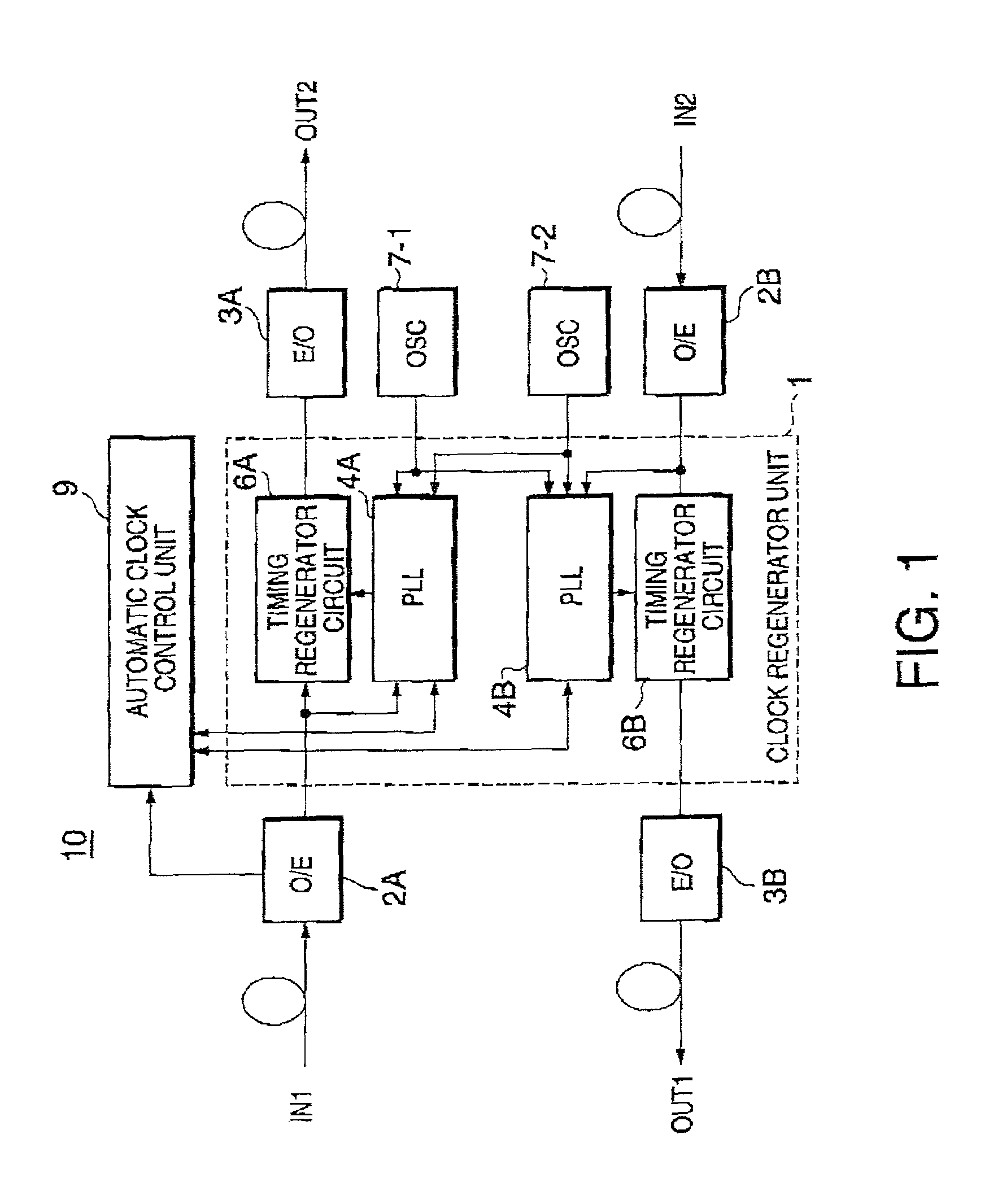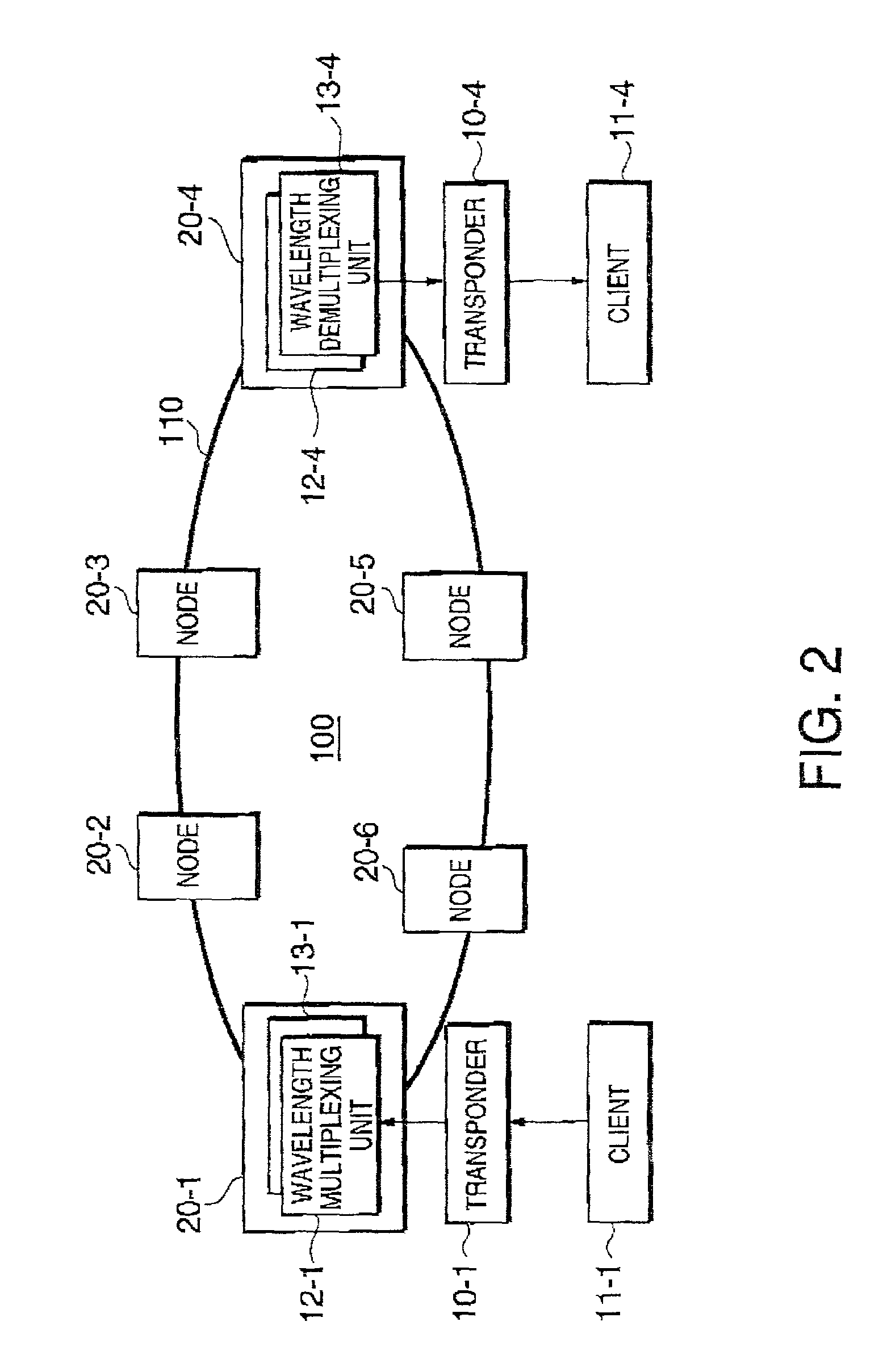Transponder and wavelength division-multiplexing optical transmission equipment
a technology of optical transmission equipment and wavelength division, applied in the field of transponder and wavelength divisionmultiplexing optical transmission equipment, can solve the problems of reducing transmission quality, unable to reproduce signal degeneration, and unable to guarantee regeneration timing
- Summary
- Abstract
- Description
- Claims
- Application Information
AI Technical Summary
Benefits of technology
Problems solved by technology
Method used
Image
Examples
first embodiment
[0031]FIG. 3 is a diagram illustrating the clock regenerator unit 1 that was shown in FIG. 1.
[0032]Following is a description of the configuration and operation of the PLL circuit 4A for the digital signals that travel from the client equipment to the wavelength division-multiplexing unit. Since the description of PLL circuit 4B of a similar configuration for the digital signals traveling from the wavelength division-multiplexing node apparatus to the client equipment would be the same as that of PLL circuit 4A, it is not repeated.
[0033]When a high-level optical input signal beyond a predetermined threshold value is detected in the O / E converter 2A, a detection signal S2 indicating the detection of a transmission signal is input into the auto-clock controller 9, which commences the automatic timing regeneration control. The PLL circuit 4A includes a voltage control oscillator (VCO) 41, a first frequency divider 42 with a variable division ratio that divides the clock signals generat...
PUM
 Login to View More
Login to View More Abstract
Description
Claims
Application Information
 Login to View More
Login to View More - R&D
- Intellectual Property
- Life Sciences
- Materials
- Tech Scout
- Unparalleled Data Quality
- Higher Quality Content
- 60% Fewer Hallucinations
Browse by: Latest US Patents, China's latest patents, Technical Efficacy Thesaurus, Application Domain, Technology Topic, Popular Technical Reports.
© 2025 PatSnap. All rights reserved.Legal|Privacy policy|Modern Slavery Act Transparency Statement|Sitemap|About US| Contact US: help@patsnap.com



